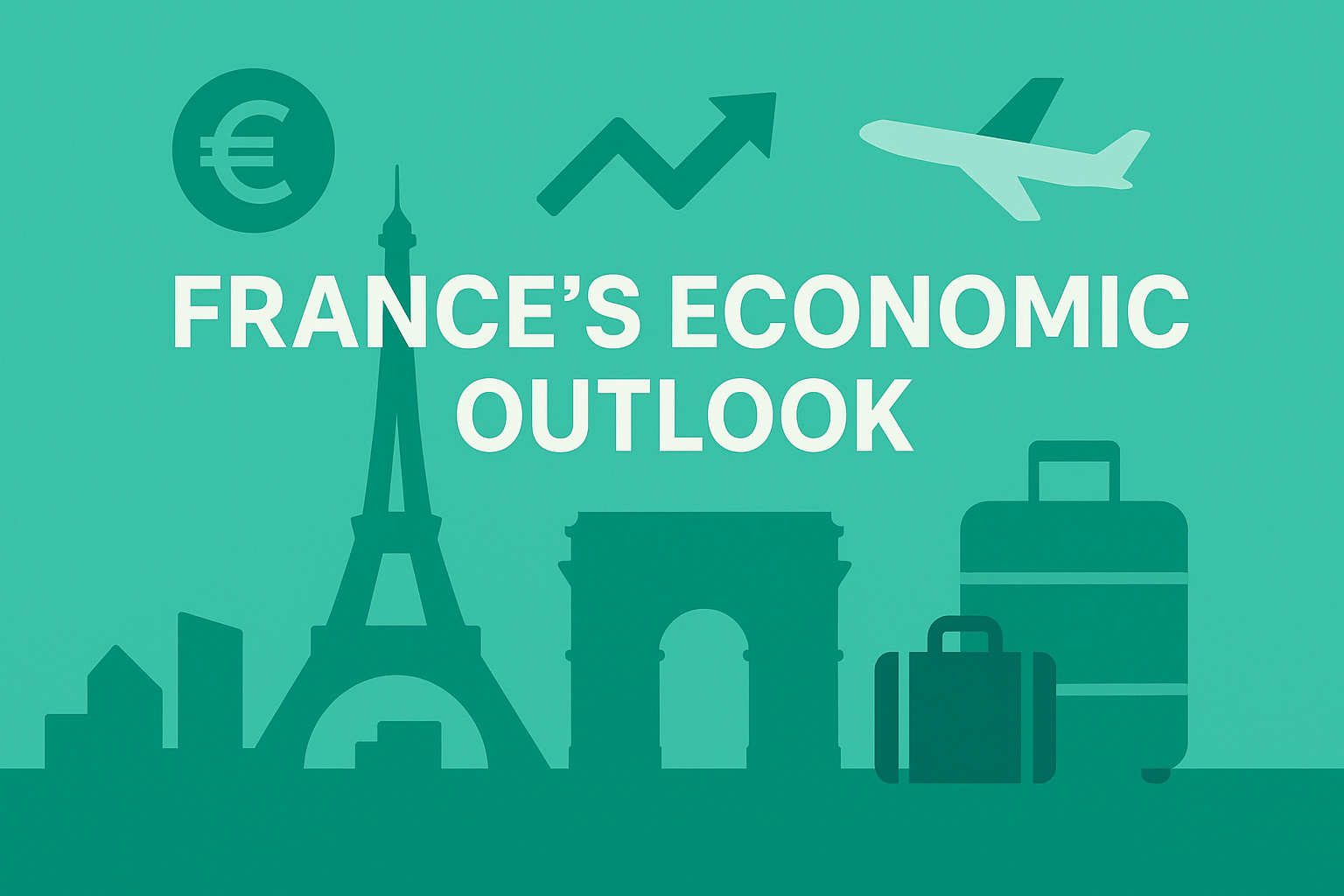Wrote: Global Economist
Executive Summary
In the latter half of 2025, France’s economy will face high fiscal deficits and political uncertainty, while tourism and household consumption act as stabilizers. Even with ECB rate cuts easing financial conditions, public debt concerns and rating risks remain. Growth will likely stay near stagnation, but positive in aggregate.
1. External Environment
- U.S. recession risks: France’s exposure to the U.S. is lower than Germany’s, so the impact on exports is moderate.
- EU partners: Slowdowns in Germany and Italy weigh on intra-European trade, particularly for manufacturing supply chains.
- Tourism: As one of the world’s top tourist destinations, France continues to benefit from strong visitor inflows, even amid a firmer euro.
Assessment: External demand is flat, but tourism provides a positive contribution.
2. Domestic Demand and Consumption
- Wages: Minimum wage (SMIC) adjustments and union bargaining deliver wage growth of around +2–3% YoY.
- Inflation: Energy stability brings CPI inflation down to the low 2% range.
- Real incomes: Improved purchasing power supports steady consumption.
Assessment: Domestic demand is a modest growth driver.
3. Investment and Industry
- Corporate investment: High interest rates have restrained investment, though aerospace, defense, and renewable energy sectors remain resilient.
- Housing: Residential investment continues to suffer from high borrowing costs and construction inflation.
- Public investment: Post-Olympics momentum fades, but green and digital spending partially offsets the decline.
4. Fiscal and Monetary Policy
- Fiscal deficit: Around 5% of GDP, well above EU thresholds, with rising pressure for consolidation.
- Public debt: Exceeding 110% of GDP, leaving France under close scrutiny by rating agencies.
- ECB policy: Rate cuts in late 2025 ease financing conditions but do not fully resolve debt concerns.
5. Political Risk
- Fragmented parliament: Weak governance capacity delays reforms, particularly in pensions and labor markets.
- Social unrest: Fiscal adjustments and inequality issues could trigger renewed protests.
6. Growth Outlook
- Real GDP growth (2025 full year): +0.5–0.7%.
- Second half (Q3–Q4): 0–0.5% annualized, essentially stagnation.
7. Risk Scenarios
- Deep U.S. recession → export and investment decline.
- Bond market instability → French sovereign yields spike, fiscal sustainability in question.
- Social unrest escalation → weaker consumer and business confidence.
Conclusion
France’s economy in the second half of 2025 will be defined by large fiscal deficits, political instability, and weak external demand, offset by tourism and resilient consumption. The baseline outlook is low but positive growth. Sustainable recovery will require credible fiscal consolidation and accelerated structural reforms.


